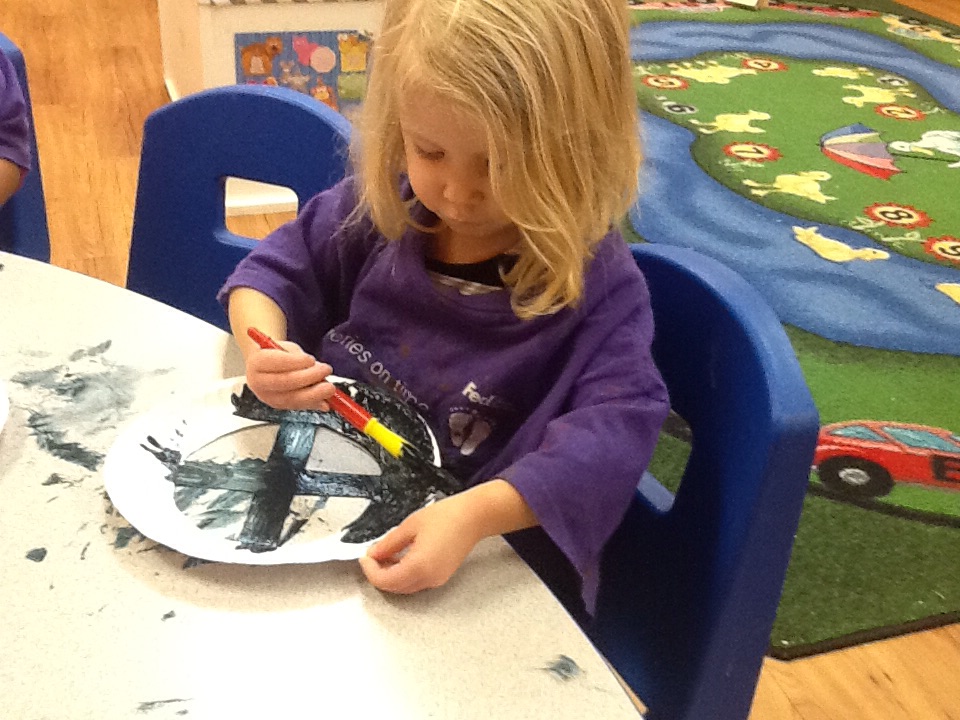
Five Fun Ways to Limit Screen Time for Your Preschooler
I am an onsite owner of a Goddard School, an education-based franchise preschool, and my faculty and I recently noticed that one of the three-year-old students had become increasingly tired in the morning and started having frequent meltdowns in the classroom. She had also become more difficult to wake after naptime. Communication between the parents and the teachers produced the reasons for the child’s change of behavior. The parents revealed that they had recently started giving an iPad to their daughter at bedtime and were letting her put herself to sleep. We explained the negative effects of too much screen time, especially at night, and encouraged the parents not to hand their child a device at bedtime.
In our increasingly technological world, devices are here to stay. Set boundaries and limits now so devices become teaching tools instead of detracting from precious interactions with family members. The introduction of smaller devices creates more opportunities to increase children’s screen time and a greater temptation for tired parents to hand their children a device. In parenting, the easy thing is often not the best thing, and we must always think about the long-term results of our choices.
As a parent of three children, I know firsthand how difficult it is to stop devices from slowly creeping into our home life. My advice is to set boundaries now, because when your children are older and have cell phones, it will become increasingly difficult to monitor how much they use their devices. Habits children learn as preschoolers can pay dividends long into the future. Setting boundaries that you and your spouse both agree on and providing many fun and enriching alternative activities may be the key to a happy home where the children are not overtired and healthy relationships can grow.
You may be thinking to yourself, “I already know that too much screen time is not healthy, but what I need is some practical help. How can I limit my child’s screen time, and what are some fun activities we can do with our preschooler at home?” I believe the answer is balance. At The Goddard School, we provide a variety of interactions for the children so screen time does not distract them from other fun and stimulating activities. Consistency between the home and school is very important, and the expert and professional teachers in our classroom environments can teach us all a lot.
- Limit your child to only 15 minutes of screen time.
I suggest setting your phone timer for 15 minutes. When the timer goes off, or a few minutes before it goes off, remind your child that he or she should be finishing the game. Setting a 15-minute limit teaches your child that individuals are in control of electronic devices and not the other way around. Remember that these educational games are great teaching tools, but they should never replace the human interaction of snuggle time at night, and you shouldn’t use them to end a tantrum or to babysit a child.
- Make bedtime the most special time of the day.
Not only was using the tablet depriving the above-mentioned three-year-old of enough sleep at night, but it also deprived her of precious snuggle time and the experience of sharing books with a parent. While educational games are a wonderful supplement for helping your child learn basic skills, they can never replace the joy of sharing a funny or touching book.
Studies have recently shown that the blue light on computer screens interferes with the melatonin that helps people drift off to sleep. A sleep-deprived child is not a happy child. According to Charles Czeisler from the Division of Sleep Medicine, Harvard Medical School, and Division of Sleep Medicine, Department of Medicine, Brigham and Women’s Hospital, in Boston, Massachusetts, “Children become hyperactive rather than sleepy when they don’t get enough sleep, and have difficulty focusing attention, so sleep deficiency may be mistaken for attention-deficit hyperactivity disorder (ADHD).”1
Ensuring that your child has enough sleep will give him or her a better chance for a more successful day with better behavior. Spend a little extra time at night to ensure that your child receives a warm relaxing bath, a chance to debrief and lots of snuggle time, which may help encourage a happier morning the following day. Make bath time fun with lots of bath toys and foam letters, and make story time special by asking questions and use different voices as you read to your preschooler.
Don’t allow a TV in your child’s room, and take away all devices before bath and story time. Bedtime should be a time to unwind and slowly prepare for a deep refreshing sleep.
- Create an imaginative play area in your home.
Collect costumes, clothing and accessories your child can use to play dress-up. Create a play kitchen where your child can imitate you as you prepare dinner. Include clean boxes, containers and utensils from your kitchen. Add an easel and art supplies to a craft area. You could also create areas with a cash register so your child can learn about money, matching sets of cards for playing memory games to increase concentration, coloring books, clay or kinetic sand.
Provide bins with different types of manipulatives, such as puzzles, LEGO, Lincoln Logs and other building materials. I would often give my children old magazines and child-safe scissors, and then I would watch as they happily cut out pictures and letters while developing their fine motor skills. Just as your child’s teachers put out different centers each day, take out new items and put away other items to pique your child’s interest. The more non-electronic activities you have available, the easier it will be for your child to hand over the tablet or turn off the TV. If an adult comes down to the child’s level and plays with the child, the chances of a tantrum-free transition increases.
- Make meal times meaningful.
Meal times should be about more than putting nutrients in our bodies. They should also be a time to reconnect with our family members and talk about one another’s days. At The Goddard School, teachers sit at the table with the children and eat with them. The children are encouraged to wait until everyone has their food, and they learn good table manners from watching their teachers.
Make sure you read the daily activity report and use this information to ask your child about his or her day. Ask about the book that the teacher read, the fun outdoor activity or the messy process art activity. By asking questions about your child’s day, your child simultaneously learns lifetime lessons about communicating and extends the learning of the school day. Some families have each member describe a high and a low for the day. This enriching exercise helps all the family members learn to listen and share the successes and challenges of their days. I often ask my family, “What was something good that happened today?” I want my children to realize that each day has some good in it.
At meal times, turn off all TVs, cell phones and other devices and give all of your attention to one another.
- Use physical touch and exercise.
Preschoolers need touch and fun physical interactions with the people who love them. Children, like adults, receive and perceive love partly through physical touch and quality time.
Some non-electronic play activities include: playing hide and go seek and tickle monster with your children, or setting up tunnels to create an obstacle course in a section of your home, having the entire family run races and play together.
Children love to dance, so try putting on some dance music and dancing together as a family after dinner every night. Try playing a variety of musical genres as we do at school. The children’s favorites include “Let It Go” from Frozen, the dance song “I Like to Move It” and, of course, the chicken dance and the hokey pokey. A fun game of freeze dance, where everyone freezes when the music stops, teaches concentration and produces lots of giggles and smiles.
Play classic games, such as duck, duck, goose; ring around the rosy; and London Bridge. All of these games include physical touch and whole body movement, and they provide valuable social interactions.
One of our most important goals as parents is to build healthy, close relationships with our children that will last a lifetime. We want our children to have more memories of reading bedtime stories and playing hide and go seek with us and fewer memories of us texting on our cell phones. Show your child that you are in control of all media and devices, provide alternate activities and choose to set boundaries, especially for meal times and bedtime.
By Cathy Jo Mattson, on-site owner – The Goddard School
For more information on why The Goddard School located in Collierville is the place for fun and learning, please contact Cathy Jo Mattson at 901-861-0108.







